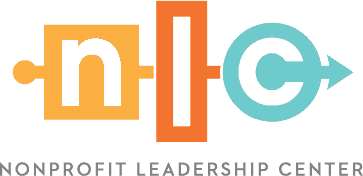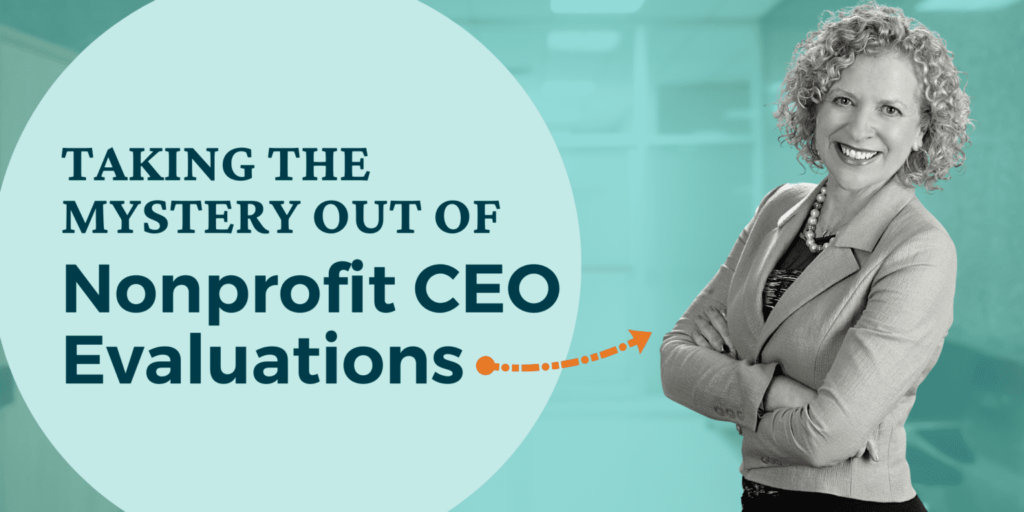After years of training board members on how to lead and govern nonprofit organizations, one question consistently comes up in every session I teach: What’s the best way to support a nonprofit CEO and ensure strong executive leadership for the future? While there are many components to effective CEO support, one of the most crucial is nonprofit CEO evaluation.
According to BoardSource (Leading with Intent 2021), the board’s oversight of the CEO is their most essential role. Yet only 53% of nonprofit CEOs and executive directors say they’ve had a formal CEO performance evaluation in the past year, with 1 in 5 (21%) reporting never having received a formal CEO performance evaluation.
Why the struggle when it comes to nonprofit CEO evaluations? Many boards don’t know where to begin.
How to Conduct a Nonprofit CEO Performance Evaluation
A nonprofit CEO is the only employee a board hires. Nonprofit missions are too important to the community for a stumble or misstep due to a lack of strategic alignment between a board and the CEO.
While there is no single approach for conducting an effective nonprofit CEO evaluation, here are six tips for how to measure CEO performance from the Nonprofit Leadership Center:
- Decide who will lead and own your CEO performance evaluation process. This is typically your board chair or governance committee chair.
- Engage the entire board and your CEO or executive director in a conversation at a board meeting about the importance of a CEO performance evaluation. Set a goal for 100% participation.
- Discuss the evaluation criteria and process with the CEO, aligning the organization’s priorities and the CEO’s position description, so everyone is on the same page.
- Determine the evaluation questions, tool and timeline for gathering feedback. See our sample CEO evaluation form here. Give board members two weeks to complete the assessment or survey, allowing one extra week if an extension is needed. It is critical that board members know their responses will remain anonymous. It is also important the board chair owns this part of the process, not the CEO or staff, to ensure confidentiality.
- Bring the compiled summary results to an executive session of a board meeting to discuss themes and agree on key messages to communicate with the CEO.
- Schedule time with the CEO to share and discuss results. In addition to the CEO, this meeting should include the board chair and possibly one other member of the board. Part of the discussion should focus on creating an action plan for future success.
The entire nonprofit CEO evaluation process can take anywhere from four to six weeks and typically coincides with the end of a fiscal year to thoughtfully review financial and organizational performance.
If possible, engage both the current board chair and incoming chair in the process to ensure continuity if there is a change of leadership from the end of one fiscal year to the beginning of another.
At the Nonprofit Leadership Center, our guiding principle is that if we teach it, we do it. Having experienced a CEO performance evaluation in each of my eight years as the organization’s CEO, I can tell you that it is a process I look forward to — and one our organization benefits from.
READ NEXT: Download Sample Nonprofit CEO Evaluation Template Form
Learn How to Conduct Better Nonprofit Board & Executive Reviews
Join us for a new two-hour live virtual class led by our CEO Charlie Imbergamo on January 16 to explore best practices for how to conduct nonprofit board and executive reviews. You’ll walk away with practical tools and evaluation templates to improve governance practices and leadership performance at your nonprofit.


